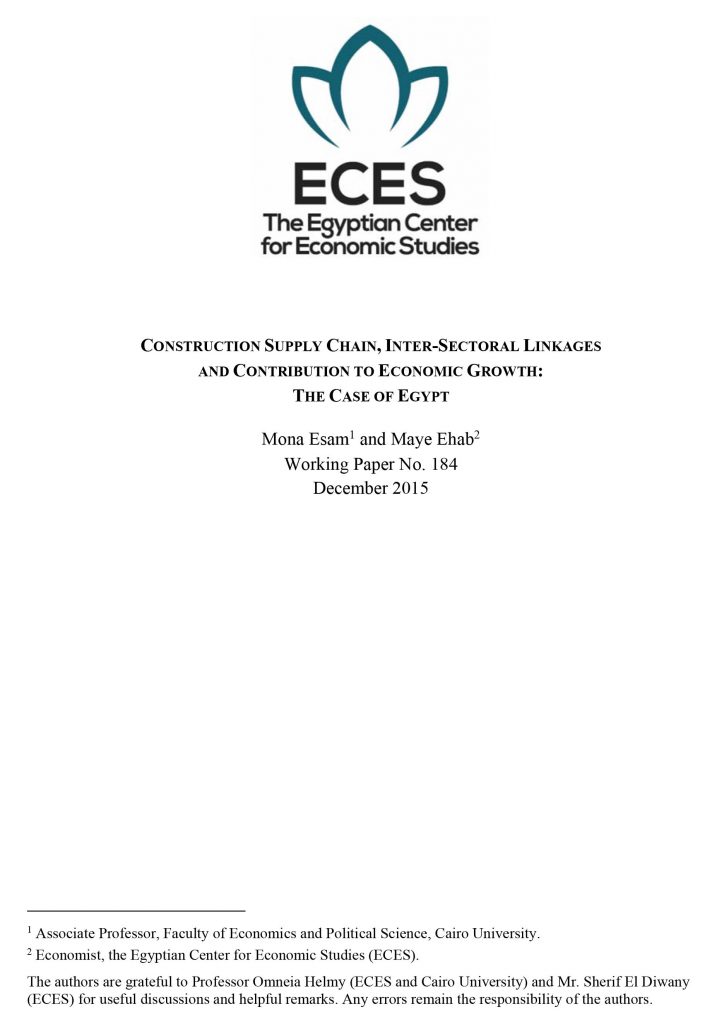The construction sector is considered a key sector in the Egyptian economy and a main contributor to economic development, specifically in total employment. This paper examines the construction sector intersectoral linkages and contribution to economic growth. The purpose is to identify the effect of a boom in the construction sector (due to government stimulus packages or heightened construction activity for instance) on other sectors as well as on economic growth in Egypt. Hence,the paper first identifies and analyzes the supply chain of the construction sector in Egypt, with a highlight on the size of SMEs and subcontracting in the sector. It then studies the intersectorallinkages of the construction sector and their implications on the Egyptian economy. This isconducted through an analysis of Egypt’s input-output (I/O) tables for the years 2007/2008, 2008/2009 and 2010/2011; in addition to time series analysis of quarterly data for the period from 2001/2002 Q1 till 2014/2015 Q2. The I/O table analysis demonstrates strong backward linkages of the construction sector, which indicate that the sector depends on other sectors in its inputs. The forward linkages indicator, on the other hand, is not as high as the backward one showing that the supply of the construction sector is mainly targeting new construction rather than repair and maintenance. The time series analysis report consistent results with the I/O table analysis, in the long run. The pull effect of the construction sector proved to be significant for both the financial and insurance activities sector, as well as the wholesale and retail trade activities one. This longrun relationship is quite stable and mean reverting, as indicated by the vector error correction model (VECM). In the short-run, however, results indicate that wholesale and retail trading sector have the largest contribution in explaining movements in the construction activities, followed by the financial intermediation and insurance activities, then the mining and quarrying sector, and lastly the manufacturing one. Finally, the Granger causality and cointegration analysis show high multiplier effects, of the construction sector, stemming from its extensive backward linkages, which have positive impacts on the macroeconomic performance. Accordingly, the construction sector is expected to be a backbone of the domestic economy that not only promotes economic performance, but also has strong pull effects to a number of feeding industries.

Construction Supply Chain, Inter-Sectoral Linkages and Contribution to Economic Growth: The Case of Egypt
15-03-2016
Author(s): Mona Esam, Associate Professor, Faculty of Economics and Political Science, Cairo University; Maye Ehab, Economist, the Egyptian Center for Economic Studies (ECES)
Publication Number: ECES-WP184-E
